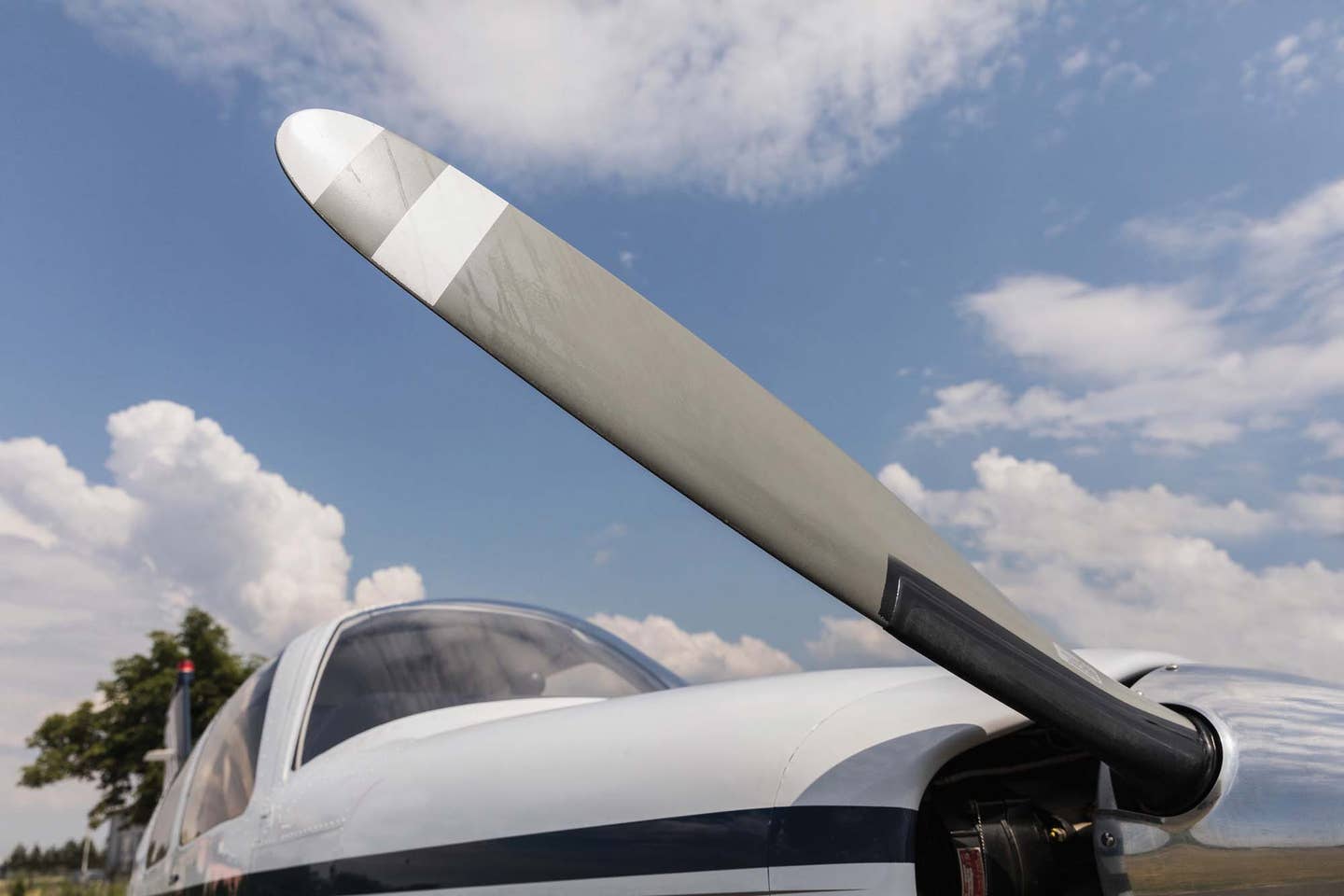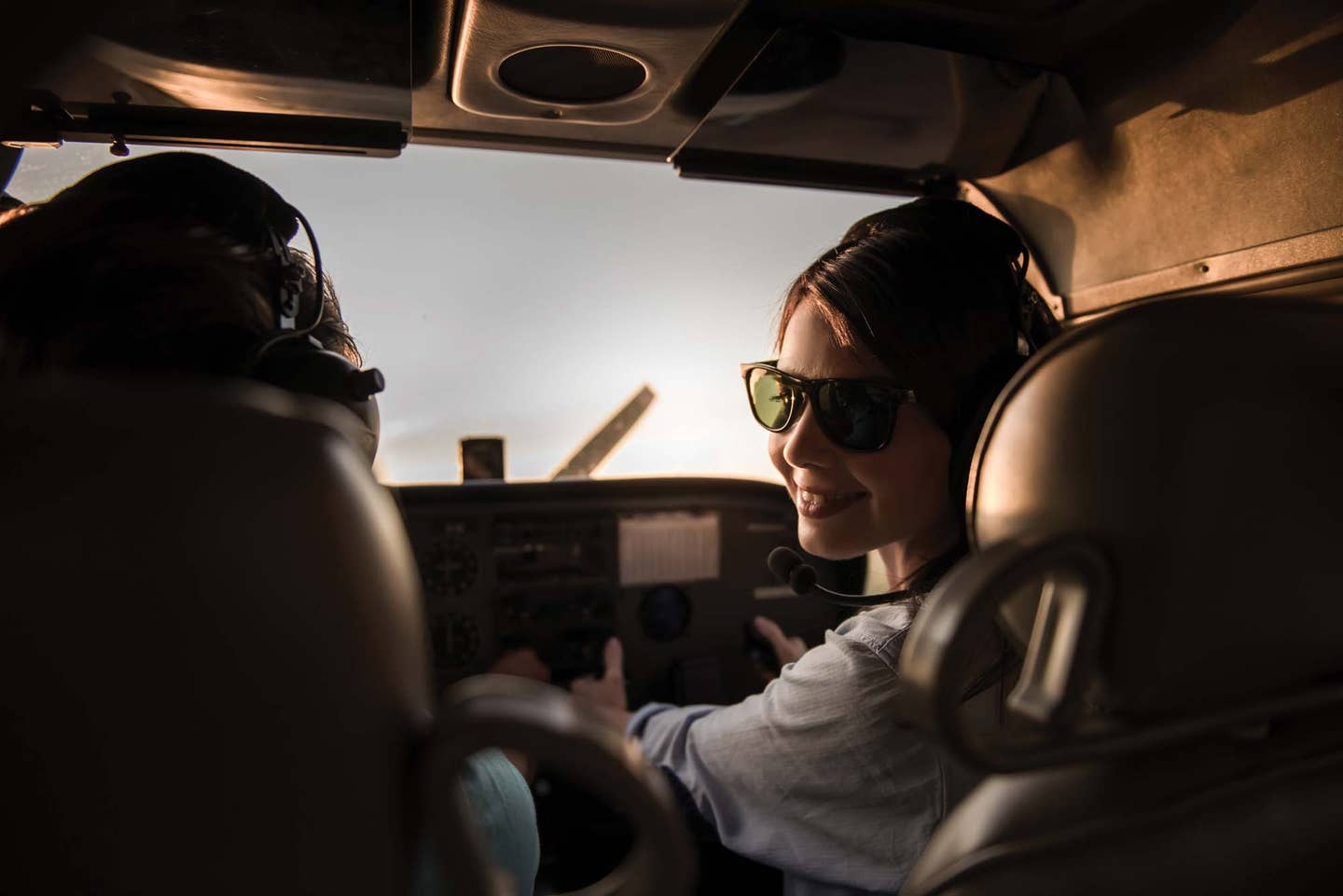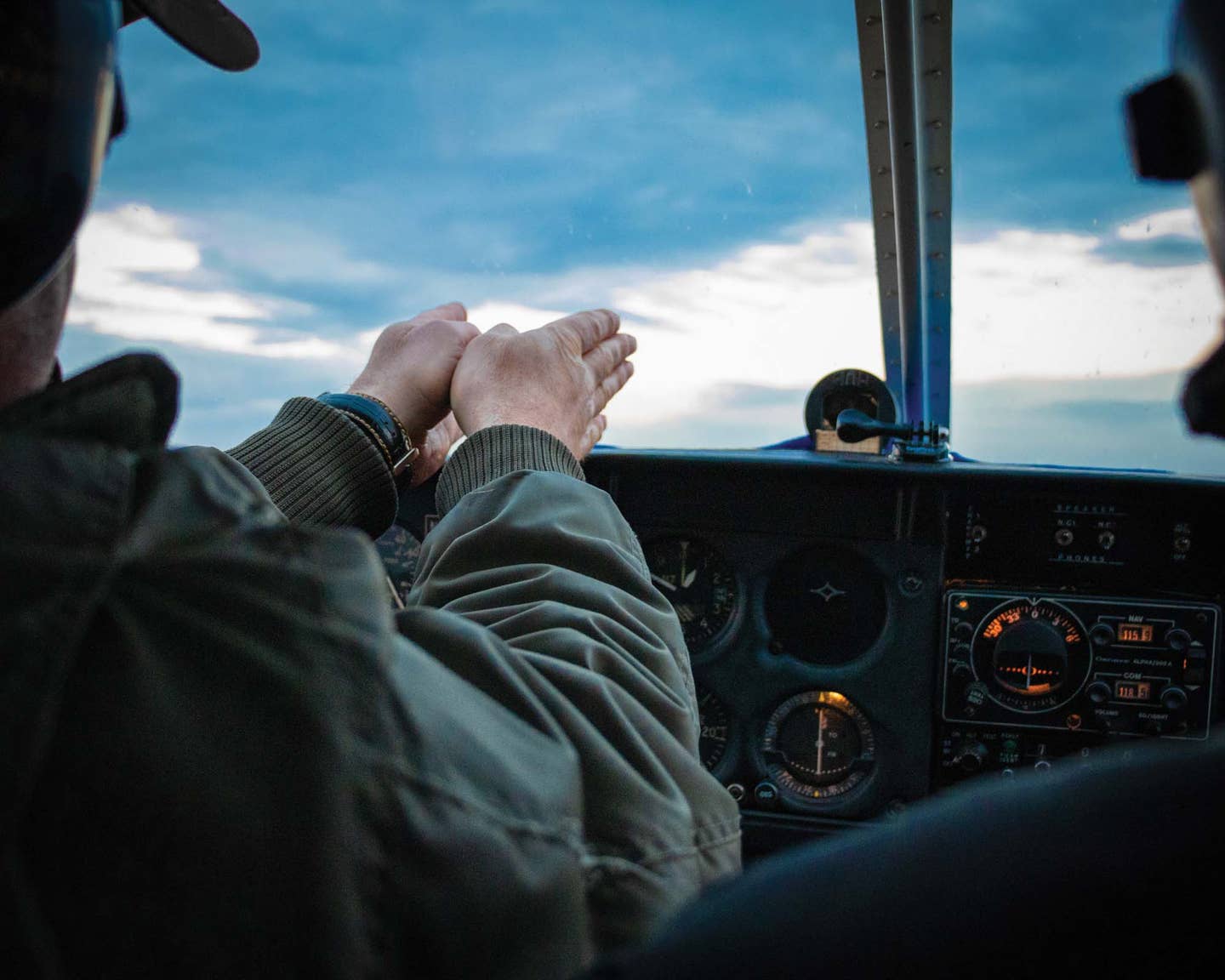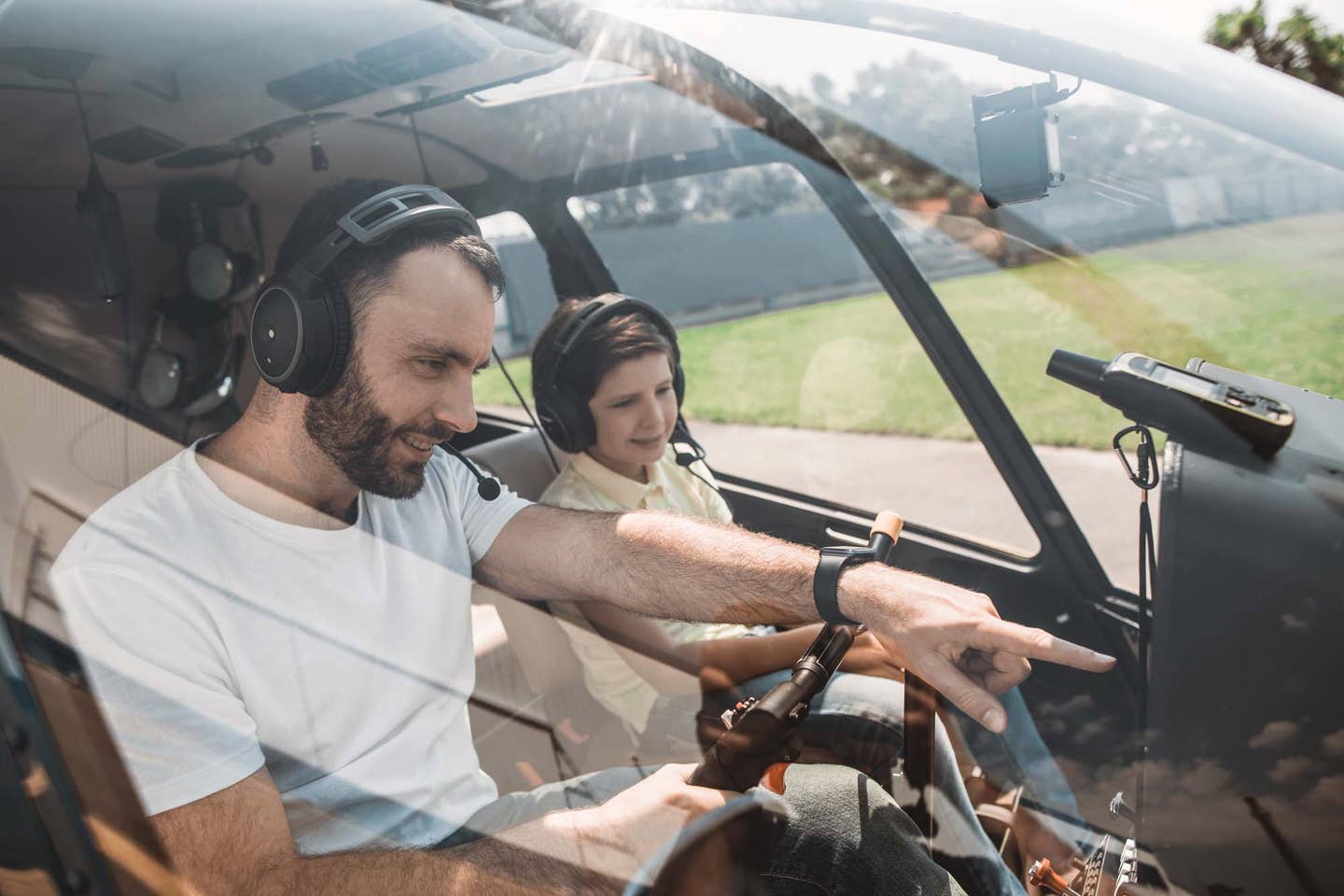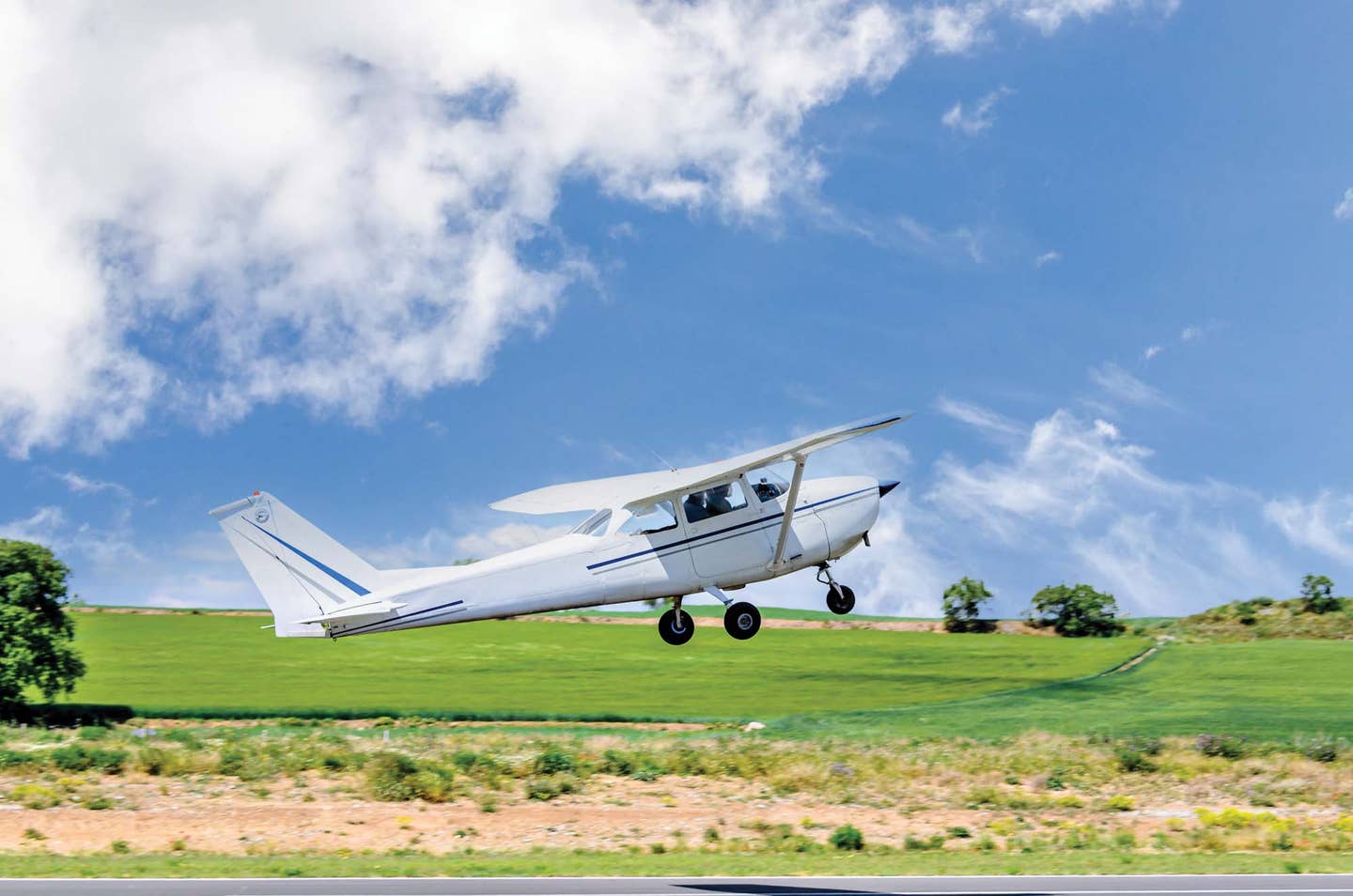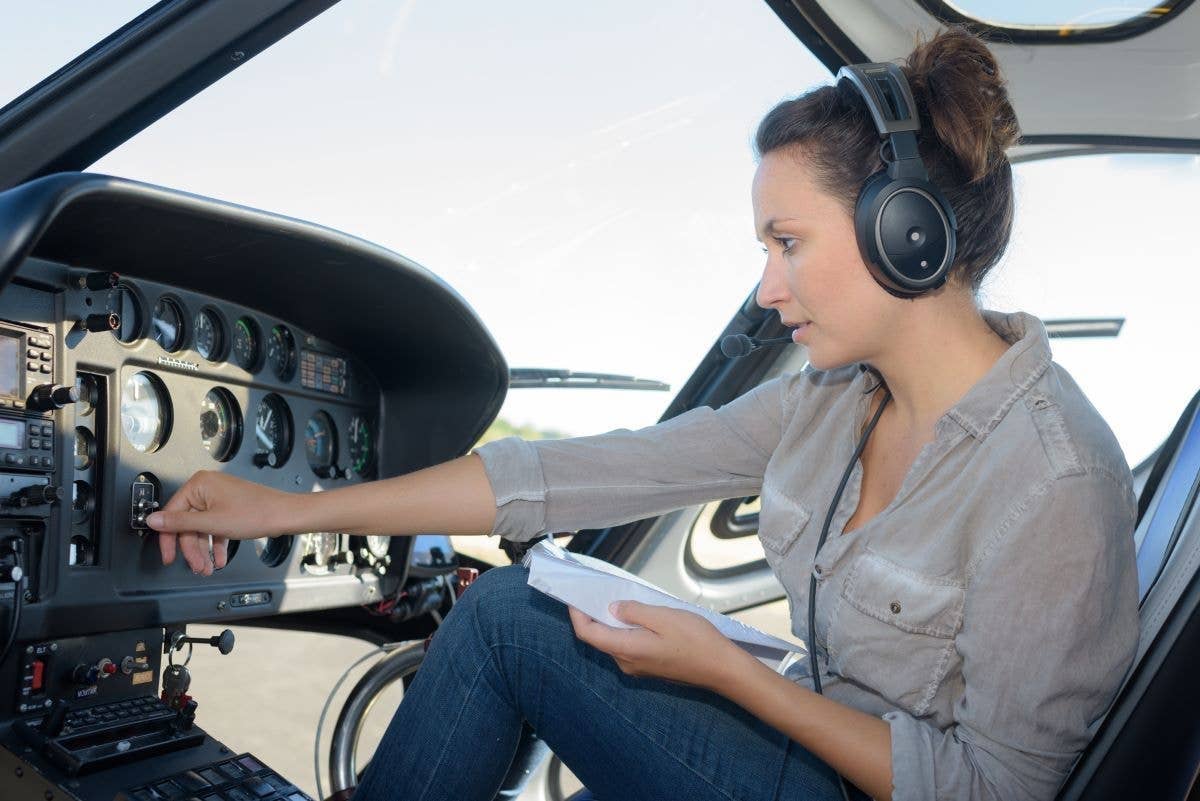Now Is The Time To Become An Airline Pilot
Earning the Airline Transport Pilot certificate and getting a flying gig can be a life-changing event, in all the good ways. And the future has never been brighter.
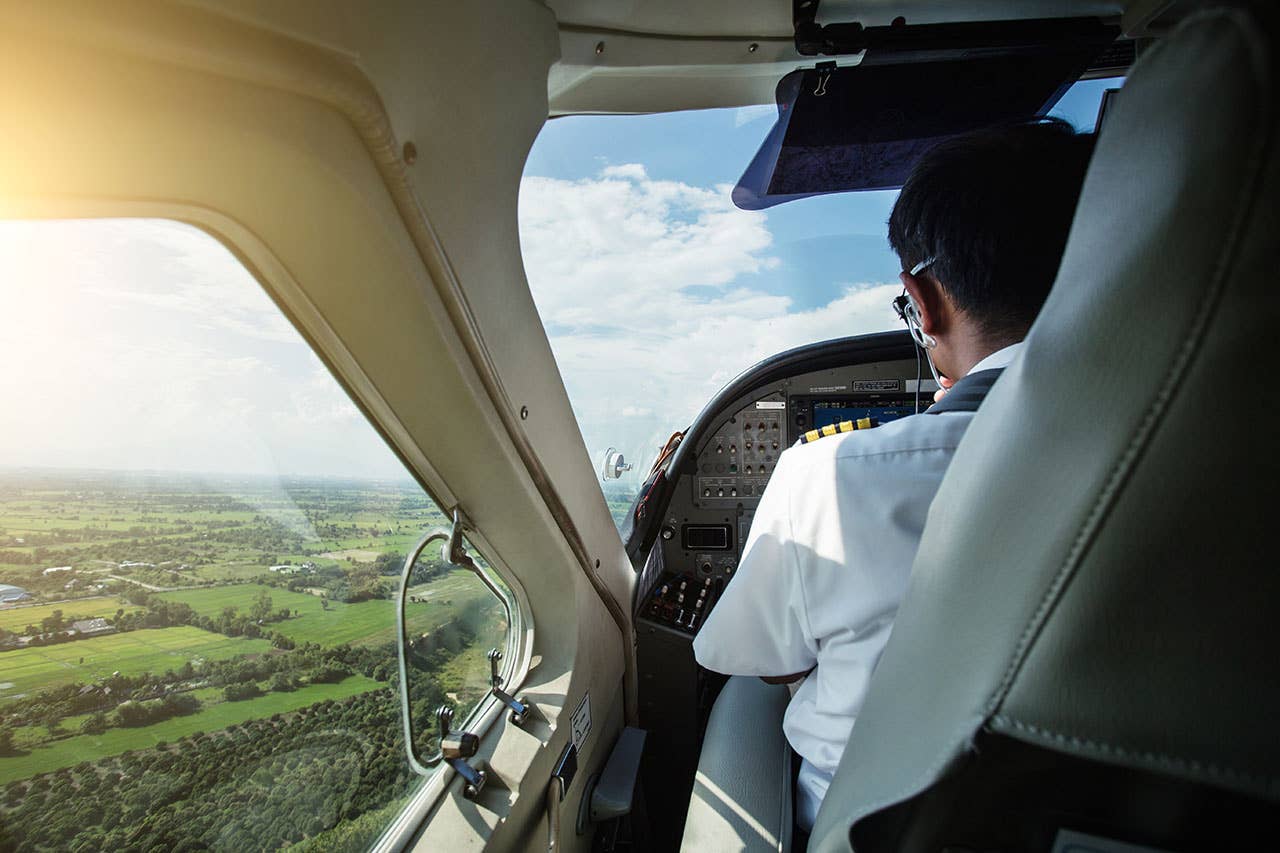
Some airline pilots are all but predestined for the career. Scott Alexander, an Airbus A320 captain, vividly remembers his uncle setting the hook at an early age: "Seeing my uncle fly around the world in a 777 and listening to my cousins tell me stories of free travel with their dad made the job seem like winning the lottery. My uncle seemed like he was on vacation for a living, with 16-20 days off a month." At the ripe old age of 4, Scott decided that he was going to be an airline pilot.
Chris Thomas, by contrast, made it into his 20s before taking the plunge. Employed as a professional firefighter in Virginia Beach, he earned a VFR Commercial certificate, a stepping stone to the ATP certificate, and flew on the side, towing banners up and down the beach and saving his money to finish other flight training when the banner tugs were parked in the offseason. "I chose to make the leap when I was about 28. At that time, I was looking at the long-term challenge of an airline career, and I think that kind of sucked me in. I loved aviation, and it's a job where, if you choose, you learn something new every day."
Now, Thomas's day job is a check airman on the Embraer 190, a role he's enjoyed for 21 years. When newly qualified pilots leave the simulator and step into the airplane, check airmen are the first captains they fly with and the final instructors of their training program. "I have had the opportunity to be with people on their first day of the rest of their career," he says. "It is an opportunity to stay engaged, help, coach, mentor and instruct."
Like a siren's song, the career beckons, rooted all the way back to childhood dreams and aspirations. Ask any airline pilot if it's worth it, and the chances are the reply you get will be an emphatic, "Yes!"
"The top careers every kid wants to do are to become an astronaut or an athlete," said Kit Darby, an industry analyst and consultant whose company studies hiring trends and the careers of pilots. "The third spot is almost always being a pilot." Statistically, he said, the athlete and astronaut ideas aren't a likely outcome except for a very talented few. While airline pilots are a tiny, tiny fragment of the overall population, there are a lot more aviators with epaulets on their shoulders than there are Olympians or professional athletes.
A Hiring Frenzy
And with the world emerging in fits and starts from the coronavirus pandemic, the airlines are, much to the surprise of many, swinging into a full-on hiring frenzy. It takes a serious commitment of time and money---years and possibly more than $100,000---to reach the right seat of a passenger jet. It's a big leap, but if you've ever wanted to become an airline pilot, the future is bright. But if you want to become an airline pilot, there's one big ticket to earn---the Airline Transport Pilot certificate, and while it's a daunting goal, this capstone ticket and the career it enables are attainable if you persevere.
It takes a serious commitment of time and money...but if you've ever wanted to become an airline pilot, the future is bright.
The Latest Swing In A Repeated Cycle
Airlines have swung between record losses and peak earnings for most of the industry's history. The industry's mandatory retirement at age 65 means that thousands of pilots are in the final years of their careers. Over the decades, a variety of factors have caused serious industry downturns---the oil crisis of the 1970s, the terrorist attacks of 2001 coupled with economic woes, and a spike in oil prices with a couple of other factors around 2009 being prime examples. Between these lows, the industry swelled with growth---and pilot hiring.
The COVID-19 pandemic took an industry from the peak of profitability and absolutely gutted it in a matter of weeks, as countries slammed their borders shut and passenger jets that hardly cooled off between flights began to gather dust. Once it became apparent that two weeks would not be the turnaround time that optimists had hoped for, many airliners wound up parked en masse at desert airports such as Pinal Airpark, Arizona, or Vacaville, California, with their landing gear and engines wrapped in plastic. Regional carriers ExpressJet, Trans States Airlines and Ravn Air ceased operations altogether in the pandemic. Furlough warnings went out to thousands of pilots at other carriers as business leaders and elected officials scrambled to keep the entire industry---a pillar of the American economy---from failing altogether.
While the industry's slump was dramatic, so was the support offered by the federal government via CARES Act funding that kept the industry alive. The act of Congress provided funding for about half the payroll at many carriers to get them through the rough spot. The government's support was for a multitude of reasons---the industry is huge, and a collapse could have put hundreds of thousands of people out of work. Airlines are also vital to the military: As participants in the Civil Reserve Air Fleet, they can help mobilize military troops and cargo when needed. The funds provided via CARES funding kept folks employed and also helped airlines maintain a hawkish position to leap into action as the recovery allowed. Worldwide, thousands of pilots were fired, furloughed or made redundant, and many airlines may have flown their final flight. Without funding from the CARES Act, Darby said, air carriers in America would have been in the exact same situation.
While the COVID-forced downturn was immediate and drastic, the rebound, at least for domestic air travel, is nearly as strong. With vaccinations on the rise and travelers sidelined for the last year and a half, airlines are seeing a strong uptick in travel. Airplanes were brought back from storage as quickly as possible, and training departments were overwhelmed by getting pilots current who hadn't touched the controls in months. Those simulator bays and classrooms are now redirected to bringing new pilots on board; a trough between waves has seemingly passed.
The bottom line is, it's time to get moving if you've been contemplating a career aloft.
What's It TakeTo Earn An ATP?
The list of qualifications for the certificate is long and written by lawyers. That said, the basics are clear, so let's take a look at what the requirements are in their basic terms.
In addition to the ATP Certificate Program (which we'll look at separately) and written exam, aviators seeking the ATP certificate must be age 23 or older, read, write and speak the English language, and be of good moral character. (As you might have guessed, no one has any real idea what that last part means). Flight experience requirements include 100 hours at night, 250 hours pilot-in-command, and 500 hours of cross-country flight. Because this cross-country time is required for certification, flights between airports must be 50 miles or more---you'll want to make sure you're not counting weekend hamburger runs across a few towns up toward this requirement. There's also a requirement for 50 hours of instrument training time.
In the last decade, the ATP has changed by the addition of a new R-ATP ticket. The Restricted Airline Transport Pilot certificate allows exemptions to age or total time requirements. Instead of a hard-and-fast requirement for 1,500 total hours, military pilots can cut the total time requirement in half to 750 hours; civilians who've graduated from aviation degree programs at approved schools can earn the rating at 1,000 hours if they hold a four-year degree or 1,250 hours with a two-year degree. The R-ATP has a minimum age requirement of 21 instead of 23. When R-ATP certificated pilots reach the age or experience requirements for a full ATP certificate, the pilot will simply present documentation that they've reached the age and/or experience requisites and have their certificate converted to a full ATP.
An Accident Changed Training For The Career
Until 2013, airlines could hire first officers with a brand-new multi-engine commercial certificate and put them into the right seat of their jets once they completed training. Several regional airlines were hiring pilots with just over 200 hours.
This changed because of Colgan Air Flight 3407's crash while on approach to Buffalo, New York. These changes came unconventionally---instead of the FAA's normal rulemaking process with periods of public comment to influence the decisions made, the families of crash victims marched on Capitol Hill, and Congress drafted a law requiring more robust qualifications for airline pilots. The law, signed Aug. 1, 2010, set a timeline into place that required all first officers at airlines to hold an ATP certificate by 2014, and it reshaped the path to an ATP certificate. Before, pilots could take the written (often after memorizing a gigantic bank of test questions and answers), meet the basic requirements, and go take an ATP check ride. The new regulation introduced the ATP Certificate Training Program, a completely new component to the certificate. The ATP-CTP is taught according to a rigorous syllabus, including a set number of hours in the classroom as well as four hours in a Fixed-Base Training Device and six hours in a full-motion simulator. The CTP, incidentally, is not required for single-engine ATP applicants.
The CTP, as defined by the regs, is designed to cover the gap in knowledge between a freshly minted commercial pilot and a working airline pilot because once an airline pilot finishes training and has been on the line for a hundred hours or so, they're treated the same as a pilot with thousands of hours and decades of experience. The FAA prescribes a set number of hours to be spent training on certain topics that really didn't come up with old training methods.
The subjects include the following:
Aerodynamics
Students spend at least eight hours on the subject of aerodynamic principles as they apply to transport aircraft. Topics include high-altitude operations, encompassing the narrow margins between stall and overspeed encountered at cruising altitude. It's not just additional busywork. The new approach gives students a chance to learn more about the topic than Mach Tuck being answer D on question 3194 or that Coffin Corner is more than the vampire section at a Halloween costume shop. Class time is expected to include kinetic and potential energy and the effects of bank angle on operating margins as well as characteristics of flying swept-wing aircraft, such as Dutch Roll.
Stall recovery might seem simple to those who've done most of their stall training in aircraft with light wing loading and immediate power availability. In a small trainer, such as those built by light aircraft manufacturers Piper or Cessna, you could just release the back pressure on the controls, advance the throttle and fly away. In a jet at altitude, the power simply isn't there, and an aggressive response to recover from a stalled state is required. Moreover, a secondary stall (that is, a stall following shortly after the initial one) is a serious threat, even for seasoned pilots.
The FAA usually doesn't take drastic action unless the ink is written in blood, and this section is especially applicable. In addition to the Colgan 3407 crash that triggered this action, Air France 447's crew misinterpreted flight instruments on a dark night on a perfectly flying airplane and consequently crashed it into the sea.
Unlike decades ago, when grizzled flight instructors poked an arthritic finger at the altimeter and emphasized preserving altitude in the recovery, the emphasis now is to recover using whatever altitude is needed without hitting the ground while keeping the airplane flying safely. This section also includes unusual attitude recovery, which is taught for both high and low altitude scenarios to cover the varying approaches to regain a safe flight path.
Meteorology
Requiring just two hours, this section is short but important, as airline pilots need to understand weather since the option to sit it out and wait for a nicer day is rarely used. Topics covered include windshear, turbulence and in-flight icing as well as on-ground de-icing and anti-icing procedures, low-visibility operation and landing on snow-covered runways potentially with poor braking action available. All are covered in what is necessarily a brief but intense bit of study.
Air Carrier Operations
With 14 hours of classroom time allocated, this is the meat and potatoes of the course. Students study the daily routine of being an airline pilot, including such topics as recognizing fitness for duty, fatigue and hypoxia oxygen deprivation. There are also sections on flight deck communications and conducting effective briefings between pilots, flight attendants and passengers. The prescribed topics get into the weeds, covering subjects such as inoperative or missing equipment, avoiding taxiing onto a runway without clearance to do so and dealing with airport movement areas/ramp procedures. Among other topics, Crew Resource Management is taught as well as an overview of safety culture and voluntary safety programs.
Once a pilot completes the CTP course, they can take the ATP written, which itself is a daunting challenge. Because the FAA no longer publishes its bank of questions for the written exams, the days of memorizing all the right answers are gone. That means you're going to spend a good bit of time in study guides covering a wealth of knowledge before you sit down for the exam.
If you're looking to do the CTP on your own, sit down for this. You're looking at about $4,000 out of pocket, and your only "flying" will be in the simulator. But if you're looking to join the ranks at a regional airline, many of them have partnerships with flight schools where the airline picks up the tab. Some let you do the course in-house as a part of their training. You've just got to rack up the hours to be eligible first.
With a fresh ATP in your pocket and a new job title on your resume, life begins to change. You'll be away from home all the time, often when things back at the ranch go wrong.
Ab Initio: Rhymes With "Zero To Hero"
Traditionally, pilots who hired on at airlines in America knocked out all the required ratings on their own dime before the company would even interview them. For years, Southwest Airlines even required a Boeing 737 type rating before you could start class at the company. (And many other carriers took note of applicants with a 737-type rating with zero hours in the airplane, figuring they'd be a gamble to hire knowing these candidates for the job would likely bail out the moment Southwest called with a job offer.) Some regionals made their pilots pay for their own type ratings at points when the supply of pilots far outstripped the jobs available.
Several foreign carriers had ab initio training programs in place for decades---Lufthansa started training its pilots in Phoenix, Arizona, more than 30 years ago. The school, first operated by Pacific Southwest Airlines and purchased by Lufthansa in 1992, trains pilots from zero hours in a very regimented environment that is specifically tailored to train students for their position in the right seat of an airliner in Europe. Several Asian carriers had similar deals with American flight schools as well.
But American students bound for American carriers were kind of on their own. Whether they did their training at a college, trained at a flight school, or rented at an FBO, they were expected to meet the requirements for the job before they applied.
In April 2018, JetBlue became the first airline in America to put together a program like Lufthansa. The first students in its Gateway Select program earned their CFIs and started building time toward their ATP certificates. The program featured a structured flight-training phase for the students to earn their certificates, followed by a period where the student became instructor to build hours toward the ATP, a process that typically lasted about two years. The payoff was becoming first officers with the airline.
Warren Christie, the airline's head of safety, security and air operations, calls the program a success. "This milestone with the first class further proves our competency-based pathway works and provides a new path of entry for those who never saw commercial aviation as a career option."
Other airlines, facing similar challenges, took note. In recent years, Delta, United, American and Southwest all created similar programs. There are differences between each, of course, but the basic idea is the same. Candidates are screened based on varying factors at different companies but getting a first-class medical (required for ATPs) is usually a first step, along with basic testing to ensure candidates will be able to learn the material. Delta's Propel program begins with flight training at a number of partner universities and colleges that have R-ATP programs. Some of the other airlines, such as Southwest's Destination 225°, offer programs available to students who haven't even attended college.
As with JetBlue's program, after earning their certificates and ratings, students then instruct or fly professionally with partner companies to get to applicable ATP minimums before joining the ranks of the sponsoring airline. These programs are very structured and offer a turn-key solution for launching one's career. Students are left with very little to figure out on their own. You sign the agreement, put your money down, and fly what the company provides.
Yes, there is that money thing. These solutions aren't cheap. Southwest advertises that its cadet program is "less than $100K," JetBlue's Gateway Select is $107,000, and United's Aviate program seems to be the bargain at $71,250. Its website advertises that it's giving you the private certificate for free in that deal. Right.
Scholarships are available to offset some of these costs, but at the end of the day, you're going to be on the hook for a hefty student loan with any of these programs.
It's A Career And A Lifestyle
With a fresh ATP in your pocket and a new job title on your resume, life begins to change. You'll be away from home all the time, often when things back at the ranch go wrong. But you'll also see places you've never been, and Johnny Cash's "I've Been Everywhere" starts to feel more like an autobiography than an oldie.
But as you gain seniority, you'll enjoy more time off and a little more control over your schedule. Historically, regional pilots often needed side work, especially as first officers, but pay rates have climbed, and the need for outside work isn't what it used to be. That said, interestingly, the free time that comes with the career and the personalities of airline pilots often conspire to seek out ways of staying busy.
For example, Chris Thomas has two side jobs: He teaches Upset Prevention and Recovery training for Prevailance Aerospace, where his students come from a variety of backgrounds: corporate, collegiate and governmental. His other side job is the one you might recognize: He flies an antique military plane, North American SNJ number two, for the Geico Skytypers Air Show Team. "The airline career is a lifestyle, and everyone may not like it," he said. "I have come to appreciate the flexibility of and low cost of non-rev travel, along with the schedule, usually 18 days off a month. Frankly, the time off and pay are what make my other two jobs possible."
Thomas adds, "Make sure that you have fun along the way. I see the colleges and universities selling a program to create a career, and I realize that none of those people ever got into an aircraft for the purpose of having fun. It was always in pursuit of a rating. Often, they are the most unhappy," Thomas said. "Don't let technology be the fun of aviation. Sure, you have to understand and utilize it. But I see lots of new pilots missing basic skills because they now climb into an RJ with 1,500 hours and are convinced that they have ’made it' and that the learning is over. It never stops."
Mike Laramee, an Airbus A320 first officer, echoed the importance of finding joy along the way, even though your career progression may meander away from the original plan. "There are lots of rewarding paths to pilot happiness, and I have enjoyed aspects of all of my jobs. Being an airline pilot brings the most financial reward for the fewest days away from home. I would tell the new guys just starting out to enjoy each airplane and job, whether Aeronca or Airbus. Remember that part of being a professional is always trying to be the best you can be at your current job."
That job, just about every airline pilot will tell you, is a challenging one, true, but one that carries with it rewards you won't find anywhere else.

Subscribe to Our Newsletter
Get the latest Plane & Pilot Magazine stories delivered directly to your inbox

